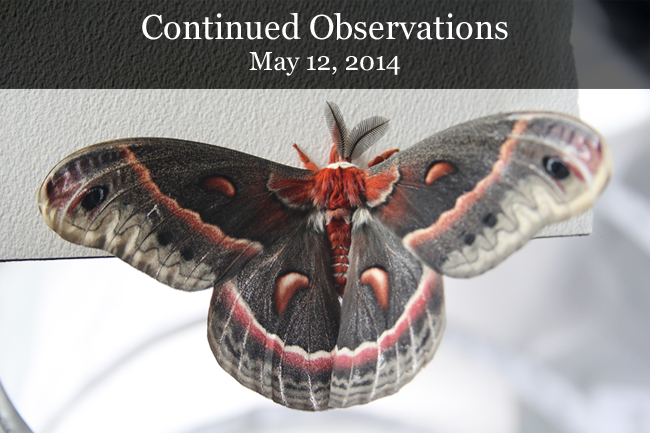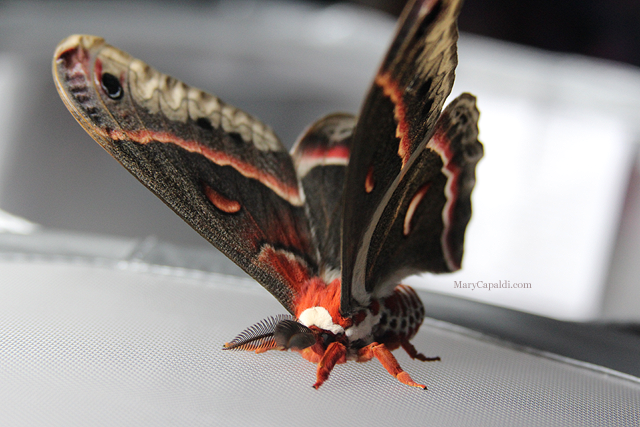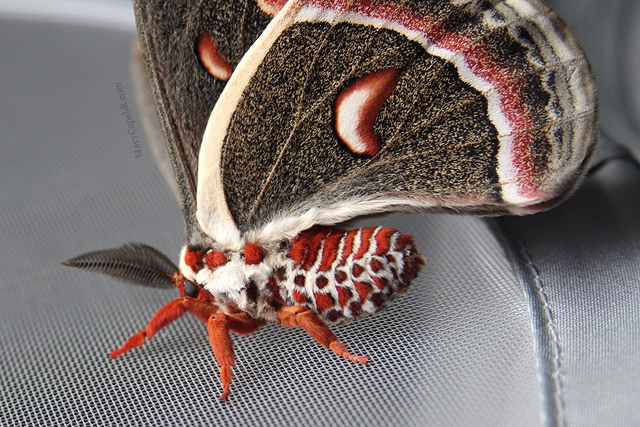The First Cecropia, Day 3

I did my Moth Series 1 paintings before I’d had many chances to observe and interact with live moths. As such, they are impressions constructed from reference pictures and the odd video clip; they represent concepts of the creatures I depicted rather than being entirely accurate scientific illustrations. Now, I have not only seen live Atlas moths resting on the walls of the Academy of Natural Sciences Butterflies! exhibit, but have actually raised a moth of my own and held it. I’ve seen Cedric walk and fly and move in unexpected ways. I have to wonder how those pieces would be different if I painted them now – and how Series 2 will stand apart as I draw from a much-widened impression for the paintings to come.
Yesterday I mentioned that Cedric, like most large moths, must vibrate his wings in order to get them warm enough to fly. He also does this interesting little march just before taking off or when he’s landed but intends to get airborne again shortly. It’s jaunty and brisk, almost robotic. I may try to get a video next time he’s active.

He almost looks as if he’s bowing.

Another spread view of his wings.

A close up of that fluffy body!
I have kept an eye on the remaining pupae and was surprised today to notice that the luna’s wings can be made out in their entirety through the amber shell. Previously, a little green was visible, but now the eye marking and dark upper edge of the forewings can be seen too. It’s tricky to photograph:

See the black swooping lines just below the antennae?
The other cecropia doesn’t look ready to eclose just yet but is still alive.
Based on my experiences so far with Cedric, I’ve had some thoughts about how to better prepare if I decide to repeat this experience for the 2015 flight. The mesh basket isn’t too small for one moth, but I’d like to be able to give them more space. I’d also want to raise a larger population to increase the chance of getting a distribution of both sexes so at least some of them will be able to mate. To that end, I might just stick to one species. Either way, I’d definitely be more willing to release unmated males in the future; this year I am hanging onto them because I intend to keep the preserved specimens for reference once they’ve passed. It has been an interesting experience, and I may well take the opportunity to try again next year with a species I wasn’t able to get ahold of this time: Polyphemus. We shall see!

 Posted by Mary in
Posted by Mary in 





